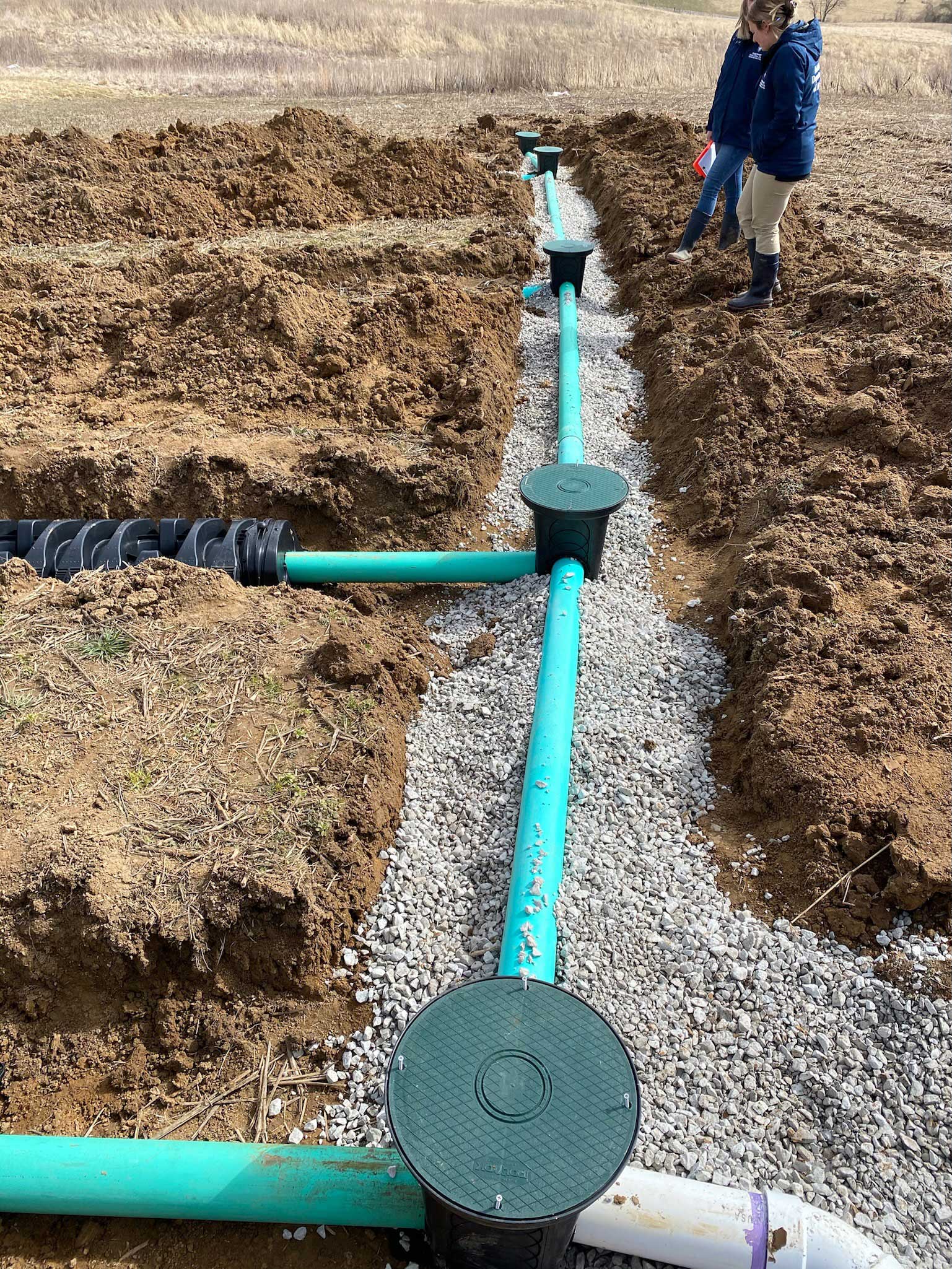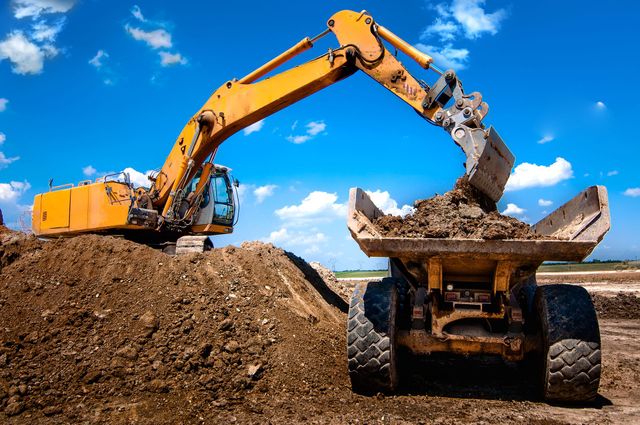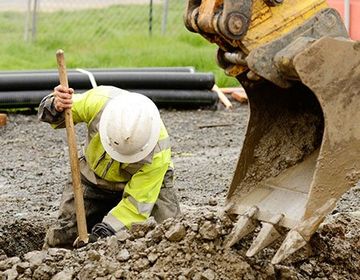Commercial Lancaster Trenching - Trenching Providers for Companies in Lancaster
Commercial Lancaster Trenching - Trenching Providers for Companies in Lancaster
Blog Article
Comprehensive Expedition: The Science Behind Superior Excavation Practices
From ancient hand tools to modern hydraulic excavators, the evolution of excavation methods has actually been a testament to human resourcefulness and technological improvements. What genuinely sets remarkable excavation methods apart is a deep understanding of geological concepts, combined with the utilization of advanced devices and approaches.
Development of Excavation Techniques
Throughout background, the advancement of excavation methods has played a vital function in advancing construction techniques and archaeological discoveries. From the fundamental devices utilized by our forefathers to the sophisticated machinery utilized in modern-day times, the development of excavation techniques has considerably changed how we come close to different tasks.
In ancient times, manual work with standard tools such as shovels, pickaxes, and wheelbarrows was the primary method of excavation. This labor-intensive process restricted the deepness and range of excavations, usually causing slow progression and limited access to certain websites. As worlds advanced, so did the tools and strategies used for excavation.
The Industrial Transformation noted a turning point in excavation techniques with the introduction of steam-powered equipment. This advancement reinvented the field, permitting faster and much more considerable excavations. In contemporary times, technology plays a critical role in excavation, with developments like GPS systems, drones, and 3D scanning enhancing precision and efficiency in the field. The development of excavation techniques remains to form the means we construct, check out, and recognize the world around us.
Duty of Modern Technology in Excavation

The integration of innovative modern technology has actually fundamentally revolutionized the field of excavation, improving accuracy and performance to unmatched degrees. One of the essential technical improvements that has dramatically influenced excavation techniques is the use of general practitioner systems. These systems permit accurate mapping of excavation websites, making it possible for drivers to properly locate below ground energies and structures. Additionally, using telematics in excavation tools has actually enabled real-time monitoring of maker performance, bring about positive upkeep and boosted operational efficiency.
Furthermore, the introduction of 3D modeling and simulation software program has structured the planning process for excavation jobs. Drivers and designers can now imagine the entire excavation process prior to breaking ground, identifying prospective obstacles and optimizing process. Together with this, the implementation of drones in excavation tasks has promoted aerial studies, volumetric measurements, and website evaluations with unparalleled rate and accuracy.
Geological Principles in Excavation
An understanding of geological concepts is essential for making sure the architectural honesty and stability of excavation websites. Geological elements play an important function in establishing the feasibility and safety and security of excavation tasks (excavating ohio). One crucial geological principle to think about is the kind of soil or rock existing at the site. Different dirt types, such as crushed rock, clay, or sand, have varying degrees of stability and call for various excavation strategies. Cohesive soils like clay may require extra assistance to stop collapses, while sandy dirts may be susceptible to disintegration during excavation.
By performing detailed geological studies and evaluation, engineers and excavators can create approaches to alleviate dangers and ensure the successful completion of excavation tasks. Eventually, integrating geological concepts into excavation practices is vital for achieving safe, reliable, and lasting outcomes.

Newest Devices for Excavation
In the world of excavation practices, modern developments in devices have revolutionized the efficiency and accuracy of excavation processes. One of the current devices making waves in the sector is making use of drones outfitted with innovative imaging technology. These drones can supply in-depth airborne surveys of excavation sites, using real-time data on topography and possible dangers. This details help in better preparation and decision-making during the excavation procedure.
One more cutting-edge device obtaining popularity is the execution of 3D printing technology for creating custom-made excavation equipment. This enables the production of specialized tools that are tailored to the specific demands of a project, increasing efficiency and lowering downtime.
Additionally, advancements in materials scientific research have caused the advancement of more powerful and a lot more long lasting excavation tools. septic ohio. Tungsten carbide-tipped excavator attachments, for instance, deal superior efficiency in tough ground conditions, improving performance on-site
Scientific research's Influence on Excavation Practices

Furthermore, improvements in products science have led to the creation of stronger, extra sturdy excavation tools and equipment. For example, using composite materials in diggers and shovels has actually boosted their efficiency and longevity, ultimately boosting productivity on excavation sites. Additionally, clinical research on dirt technicians and geotechnical design has provided useful understandings right into dirt behavior, enabling excavation specialists to make informed decisions regarding excavation approaches and dirt stabilization strategies. In general, scientific research remains to drive development and renovation in excavation methods, making excavation tasks more effective, cost-effective, and lasting.

Conclusion
To conclude, the development of excavation methods has actually been considerably influenced by developments in innovation and a much deeper understanding of geological concepts. The latest tools and devices used in excavation have enhanced effectiveness and precision in the area. The application of clinical knowledge has actually significantly improved excavation methods, resulting in much more sustainable and reliable approaches for excavating different sorts of materials.
In the realm of excavation practices, contemporary developments in devices have revolutionized the efficiency and precision of excavation procedures. By leveraging clinical principles, the excavation sector has actually been able to significantly improve effectiveness, precision, and safety in excavation processes. GPR permits excavation groups to non-invasively scan and map subsurface frameworks, utilities, and potential threats, allowing them to plan excavation projects with better precision and reduced danger of crashes.
In addition, scientific research on dirt technicians and geotechnical engineering has actually given valuable understandings into dirt behavior, permitting excavation professionals to make informed choices relating to excavation techniques and soil stablizing methods. In general, science proceeds to drive technology and improvement in excavation practices, making excavation jobs extra reliable, cost-efficient, and sustainable.
Report this page